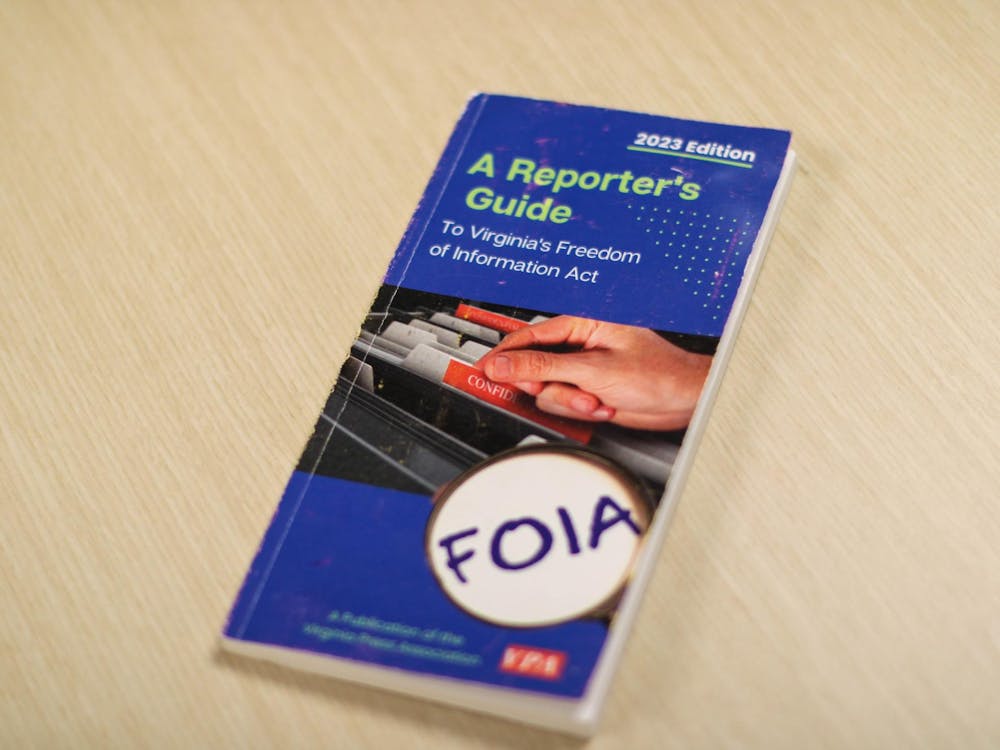In the wake of Gov. Tim Kaine's announcement last week that 93 Virginia counties and 34 cities are considered federal disaster areas because of drought, University officials are attempting to find creative ways to decrease water usage.
Though their efforts have been commended by some independent organizations, members of student environmental groups on Grounds say there is still more to be done, especially in the area of informing students about the drought.
A thirsty past
Droughts are not new to Virginia. In 2002, a now-infamous drought led to massive conservation efforts by the University and strict local regulations that included shutting down car washes and requiring restaurants to reduce water consumption by 20 percent.
Though the current situation is not as drastic as the shortage in 2002, Albemarle County is considered a federal disaster area, along with every Virginia county except York and Arlington.
In particular, the Rivanna Reservoir, the City of Charlottesville's water source, is currently estimated to contain 120 days worth of water. At the peak of the 2002 drought, that level dropped as low as about a 30-day supply.
According to Diane Frisbee, watershed protection specialist for the Nature Conservancy of Virginia, the drought will continue despite recent rainfall.
"Even with this rain that's coming, that's still not going to be enough ... primarily because we need to be thinking about next summer," Frisbee said. "We haven't had enough rain to help recharge those reservoirs."
In addition to the weather itself, a main contributor to water shortage is lack of water conservation in Charlottesville communities, University Energy Program Manager Paul Crumpler said.
"The dry conditions are definitely weather patterns, but even under the best of circumstances the water supply in the area is limited," he said.
Conservation efforts have improved, however, since the major drought that occurred in 2002, he added.
"We're in a pretty good shape because during the last drought we did a lot of things to minimize water use," he said.
The University responds to local regulations
The City of Charlottesville and Albemarle County are both currently under drought warning status, meaning citizens have to abide by special restrictions on water usage.
According to Charlottesville Director of Utilities Lauren Hildebrand, the city code regarding water usage during a drought was revised after 2002. Under the current policy, during a drought, Charlottesville residents and institutions are prohibited from watering vegetation with hoses or buckets larger than three gallons, washing vehicles and building exteriors, running water in ornamental fountains and filling or refilling pools. The Albemarle County regulations are slightly different, including fewer restrictions on landscape watering, so Charlottesville officials are currently considering ways to make the policies of both districts more concordant, Hildebrand said.
When a violation is reported, city officials issue a warning, followed by a fine if the offender continues to break the rules.
The University has followed these regulations by shutting down all decorative fountains, not washing commercial vehicles, not planting any new vegetation and discontinuing all irrigation, Utilities Director Cheryl Gomez said.
Hildebrand added however that in Charlottesville and at the University, irrigation of sports fields is permitted. On Grounds, this includes varsity sports fields and more informal recreation areas such as Mad Bowl and Lambeth Field.
According to Crumpler, the purpose of watering these fields is for safety.
"Athletic fields are watered, but they're watered to keep the ground soft," he said. "Anything we are watering we have cleared through the city."
Athletic fields at the University are watered only at night, so less water is lost to evaporation, Hildebrand noted, adding that the practice will be prohibited altogether if the restriction level is increased to emergency status.
The University is taking other steps to conserve water, Crumpler said. For instance, all buildings are equipped with systems that monitor water usage to prevent leaks, and all plumbing fixtures on Grounds are now low-flow.
The University also monitors water usage in residence areas. Levels of water usage have dropped since the 2002 drought, Gomez said, noting that the University's water usage peaked in 1999 and has decreased steadily since then.
"Our water use now is down 10 percent from 2002, and that's even though we have more buildings and more people," Crumpler said.
What else can be done
According to Frisbee, the University generally conserves water efficiently.
"I think they're really doing a good job in all aspects of the environmental work," she said. "They're doing a lot of innovative things."
Yet Student Environmental Action President Dana Richards said she thinks there are still areas in which the University could improve its conservation efforts.
"I feel like U.Va. could use water more efficiently, especially in the area of our dining halls," she said. "As we have been in a drought for some time, it would be appropriate for the dining halls to eliminate the use of trays."
Richards said the practice of eliminating trays was implemented successfully during the 2002 drought.
A crucial part of successfully eliminating trays is educating students about the purpose of doing so, she added.
Environmental Sciences Organization President Thushara Gunda said educating students about conservation in general is a weak area in the University's conservation program.
Although there are notices on the trifolds in the dining halls about conservation, she said she does not feel the conservation movement is widely publicized.
"They could make it a lot more of a wider-known effort," she said. "In that way, I think the student body would have a lot of influence."
Gunda added that she believes the University is open to suggestions about conservation.
According to Gomez, conservation advocates attended summer orientation sessions, handing out information to incoming first-year students. The University has also placed tags in recreational facility showers reminding patrons to conserve water and included a link to a drought information Web site on the University's home page. Annual energy days at the University are also scheduled, featuring presentations with conservation tips.
Because the use of water in residence halls has decreased, students must be using less water, Gomez added, noting that this decrease may be in part because of the University's use of low-flow showers and toilets.
"You don't even feel the difference even though the water usage is less," Gomez said.
Crumpler noted University policies regarding heating and cooling systems will be adjusted if the drought continues.
"About 20 to 25 percent of all of our water use is actually associated with energy systems," he said. "That's an area that we would do more of if the drought continues."
He noted that some new buildings will be equipped with different types of energy systems that use less water. Some will also include toilets that use recycled "gray water."
Frisbee added there are several small things Charlottesville residents can do themselves to conserve water such as testing their toilets for leaks and turning off water sources when they are not in use, for example, while brushing teeth.
"I think it would be great if we could encourage folks to think about water as a valuable resource," she said.






